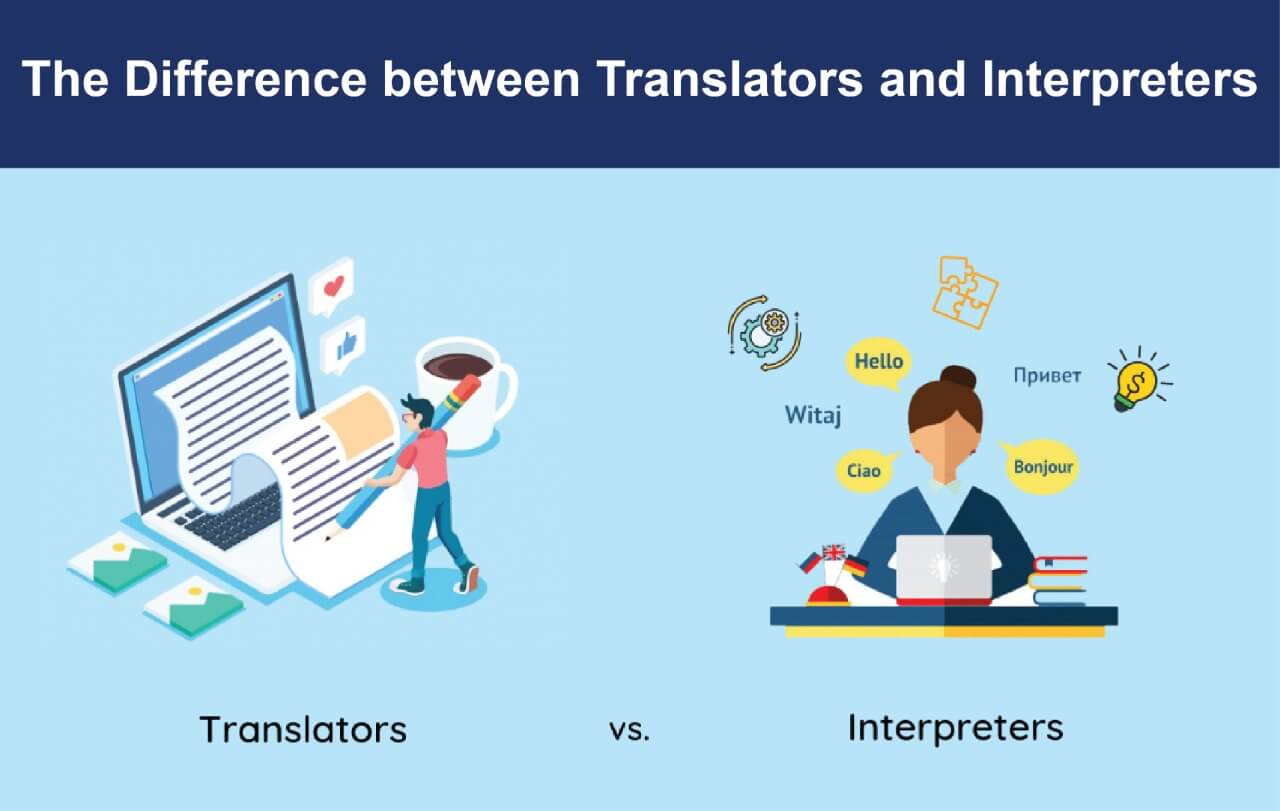
To successfully build a brand in today’s global market, your organisation must communicate with foreign audiences in a local language. Making your material resound in the native language may need interpretation, translation, and localisation services—or all of these. How can you know which one is required?
The primary distinctions between interpretation and translation are present in medium and skill set of each service: interpreters translate spoken language vocally, whereas translators translate the written word: both demand profound cultural and language comprehension, subject matter expertise, and the ability to communicate appropriately.
While the names are sometimes used interchangeably, recognising the differences between these closely related language disciplines is critical when selecting the service you want.
Interpretation is a real-time service delivered either instantaneously (simultaneously) or shortly after the original speech (consecutive). There is no support from scripts, dictionaries, or other references. Professional interpreters must work within the context of the source language (language to be translated), keeping the original meaning while rephrasing idioms, colloquialisms, and other culturally specific references in ways that the target audience may understand. An interpreter's sole resources are domain knowledge expertise (supplemented by ample research and study for every project), a good memory, and quick reflexes.
Simultaneous Interpreters work on live projects such as conferences, seminars and meetings, while consecutive interpreters are mainly responsible for medical appointments, judicial procedures, live TV coverage. Chuchotage or whispering interpretation is simultaneous interpreting for a small group of people sitting together. On the other hand, Sign language interpretation is very important for the differently abled.
The most significant distinction between interpreters and translators is that professional translatorshave much more time and resources at hand during their work, as compared to interpreters. They employ computer-aided tools in their job. . To ensure quality, the translator may use glossaries and translation style guide templates to go through each section of the content. Finally, another linguist will review the translation before turning the completed written document back into its original format. Translators work on all types of textual content, including websites, papers, video subtitles, software, and multimedia.
As a result, the distinctions between interpreting and translating are significant. To summarise, the following are the five essential distinctions to consider when deciding which service is most suited to a project.
There are five critical distinctions between interpretation and translation.
Interpretation deals with spoken language in real-time, and thus the output is oral; translation services are text-based.
Interpretation is made simultaneously or consecutively in real-time. The procedure can be carried out in person, over the phone, or onvideo. Translation, on the other hand, can occur after the original text is generated. This offers translators plenty of time to use tools and reference materials to produce accurate, high-quality translations.
Interpretation needs a little lower degree of precision than translating. Interpreters strive for perfection, but it's challenging to attain in a live setting—for example, some of the original speech may be left and doesn't reach the target audience. Again, time is on the side of translators, and they have the liberty to examine and correct written language for precision.
Interpreters must have a complete command in at least the 2 languages, especially the terminology considering the content since they must interpret in both directions instantly without any language aids. Professional translators usually deal with the text of one language or two.
Both interpreters and translators confront the issue of making metaphors, analogies, and idioms connect with the intended audience. In addition, interpreters must catch tone, inflections, voice quality, and other distinguishing features of the spoken phrase and then relay these verbal signals to the audience.
Now that the distinction between translating and interpreting is clear, it is easy to find the service you need by asking the following questions: Do you need to translate highly technical text or need help in meetings? Although interpreters and translators possess similar skills, a language services provider can match your needs with specialists who have the right skills and expertise for the job. Learn more about interpreting and translation services and what they can accomplish for you with the Language Services Bureau. Language Services Bureau provides professional interpretation and translation services to help businesses reach and build a global community. We have a team of experienced interpreters who are experts in both the language and the technology required for providing interpretation- translation services.
For any queries related to language translation services. Inquire at our email address below or give us a call today!
info@languageservicesbureau.com
Telephone: +91-20-24470509, +91-82370 60559
Similar articles for you...

आमच्या गेल्या महिन्यातील ब्लॉग मध्ये भाषांचे ज्ञान आवश्यक असणाऱ्या करियर क्षेत्रांची माहिती आपल्याला मिळाली. जिथे भाषेचे ज्ञान फायद्याचे ठरते असे इतर व्यवसाय आपण या महिन्यात पाहुयात.

Posted by : Language Services Bureau

The time it takes to learn a language depends on what you want to do with it– here is a great article about language learning and the kind of expectations you can set about the time required for the same!